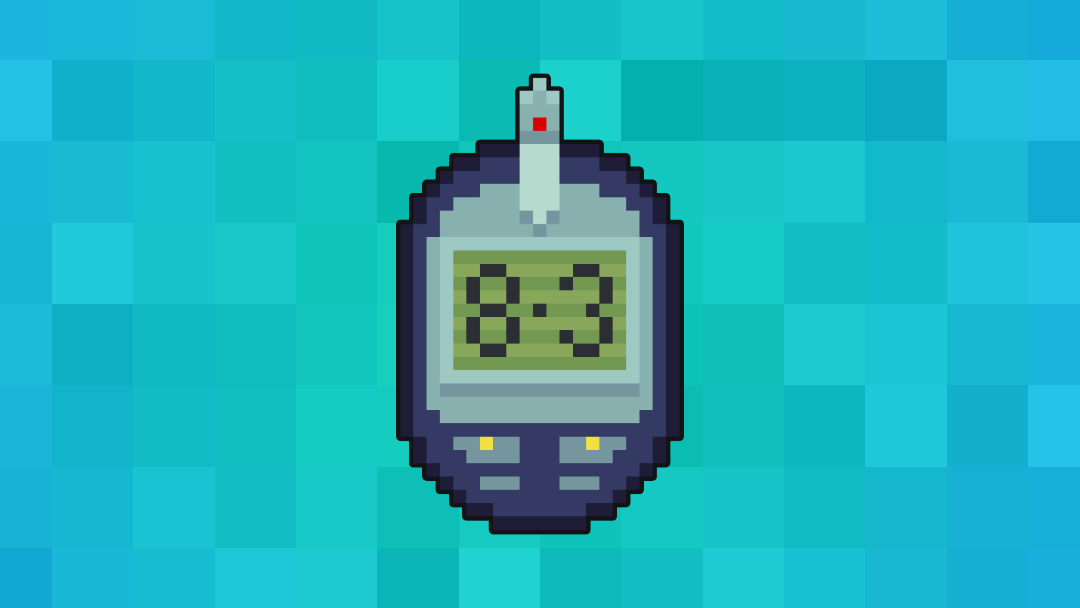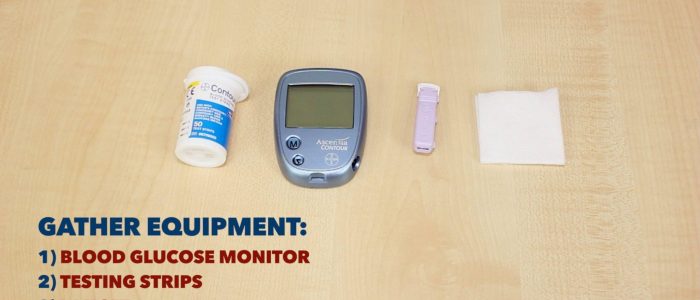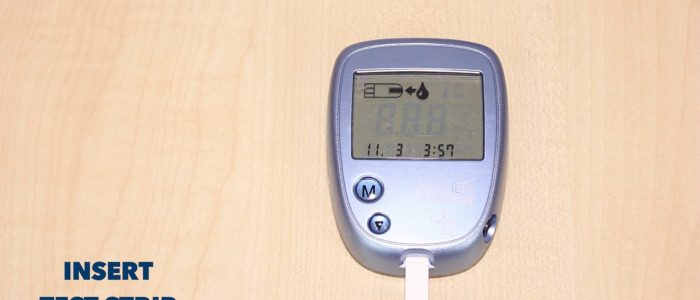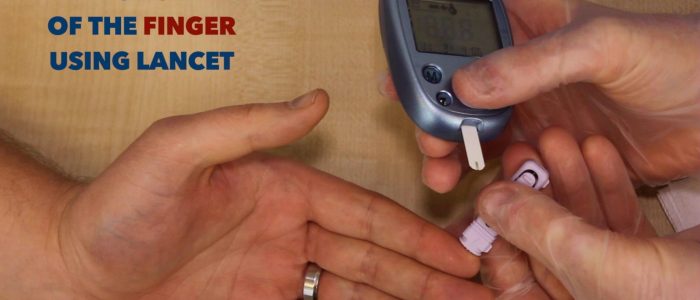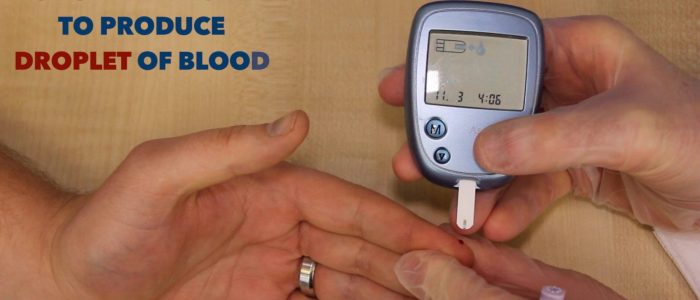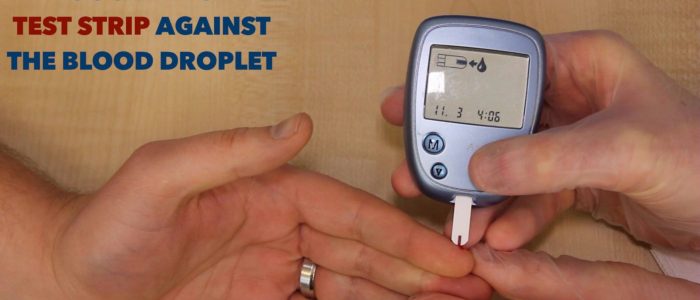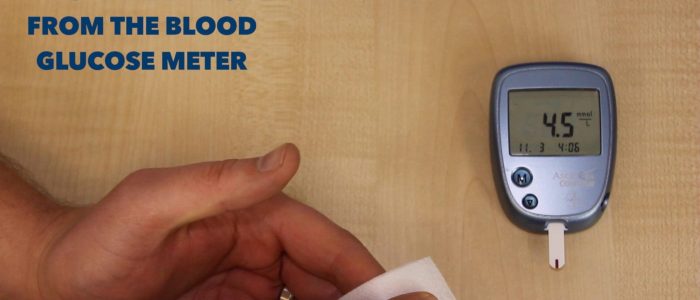- 📖 Geeky Medics OSCE Book
- ⚡ Geeky Medics Bundles
- ✨ 1300+ OSCE Stations
- ✅ OSCE Checklist PDF Booklet
- 🧠 UKMLA AKT Question Bank
- 💊 PSA Question Bank
- 💉 Clinical Skills App
- 🗂️ Flashcard Collections | OSCE, Medicine, Surgery, Anatomy
- 💬 SCA Cases for MRCGP
To be the first to know about our latest videos subscribe to our YouTube channel 🙌
This capillary blood glucose measurement guide provides a step-by-step approach to performing blood glucose measurement in an OSCE setting with an included video demonstration.
Gather equipment
Gather the relevant equipment and place in a clean tray:
- Non-sterile gloves
- Blood glucose reader (a.k.a. glucometer): calibrate using calibration fluid if required.
- Spring-loaded lancet: to obtain the blood sample.
- Testing strips: make sure the expiry date is valid.
- Gauze
- Tape
Introduction
Wash your hands and don PPE if appropriate.
Introduce yourself to the patient including your name and role.
Confirm the patient’s name and date of birth.
Briefly explain what the procedure will involve using patient-friendly language: “Today I need to measure your blood glucose level, which involves taking a very small blood sample from your fingertip. You will experience a sharp scratch when I take the sample, but this should be very brief.”
Gain consent to proceed with blood glucose measurement.
Ask the patient if they have any pain before continuing with the clinical procedure.
Position the patient sitting comfortably on a chair.
Measure the blood glucose
1. Ensure the patient’s finger is cleaned prior to measuring capillary blood glucose:
- It’s important that the skin over the site being tested has been cleaned, as substances on the skin can affect the accuracy of capillary blood glucose results (e.g. substances containing sugar).
- Ask the patient to wash their own hands or alternatively you can clean the site with an alcohol swab (70% isopropyl).
- Make sure the skin over the testing site has dried completely before performing capillary blood glucose measurement.
2. Turn on the capillary blood glucose monitor and ensure it is calibrated.
3. Load a test strip into the glucose monitor.
4. Don a pair of non-sterile gloves.
5. Pick up the lancet and carefully remove the protective cap.
6. Prick the side of the patient’s finger with the lancet and gently squeeze the finger from proximal to distal to produce a droplet of blood. Some guides advise cleaning away the first drop of blood, however, there is no evidence that this significantly impacts the reliability of blood glucose results.
7. Gently touch the tip of the test strip against the droplet of blood to allow it to be absorbed into the strip.
8. Apply gauze or cotton wool to the puncture site to stop the bleeding and ask the patient to maintain pressure over the site.
9. Safely dispose of the lancet into a sharps bin.
10. Dispose of the test strip and the cotton wool/gauze into a clinical waste bin. If the patient’s finger is still bleeding, keep the cotton wool or gauze in place and secure with some tape.
To complete the procedure…
Explain to the patient that the procedure is now complete.
Thank the patient for their time.
Dispose of PPE appropriately and wash your hands.
Document the capillary blood glucose results on the appropriate chart.
Reviewer
Michelle Spence
Senior Nurse Practitioner


